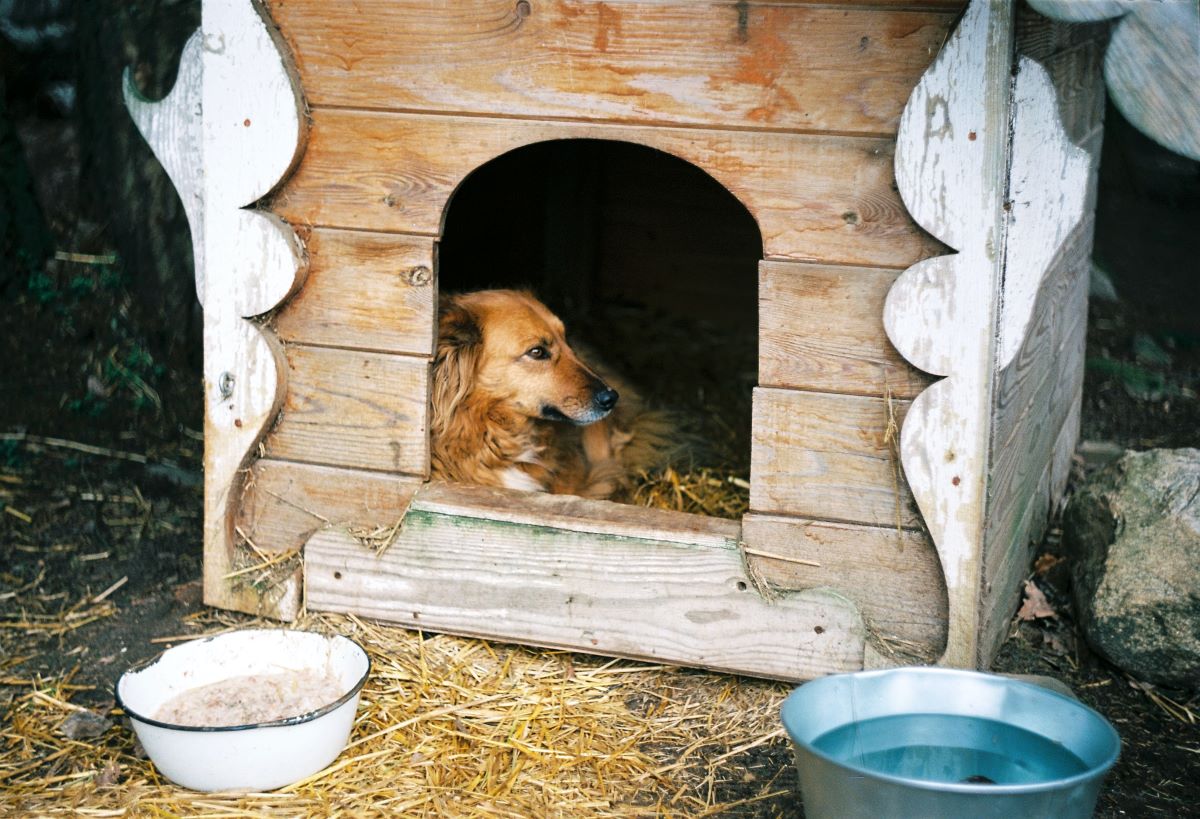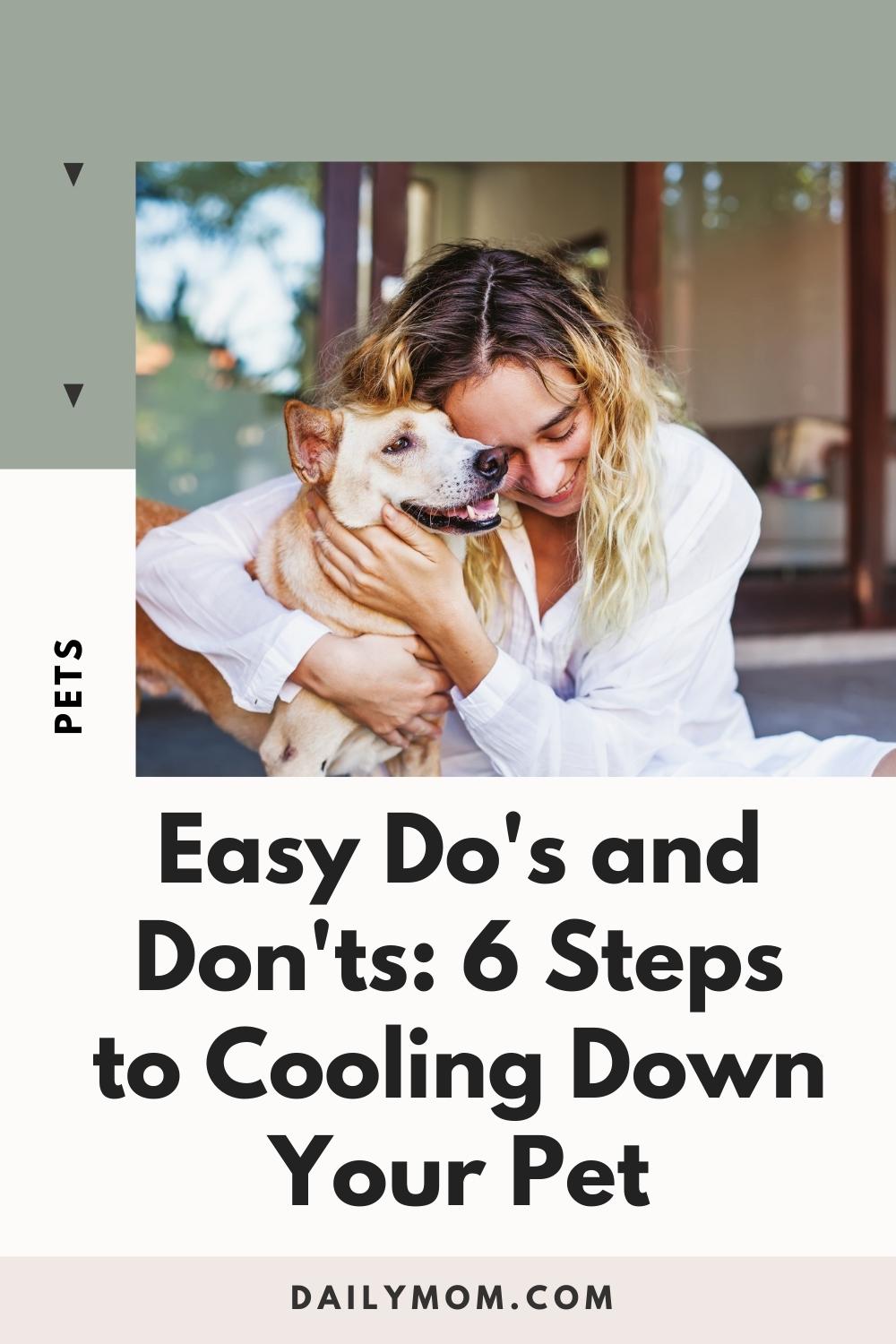Summer is in full swing, and if you’ve spent any time outside, you know that cooling down becomes quickly necessary. It doesn’t take too long before your face gets flush, the sweat starts rolling, and exhaustion sets in. If you’re over the summer heat already, chances are your pet feels the same way, but they can’t really tell you.
While it’s easy to tell when a person is overheating, heat stress looks very different in animals. It’s critical to their health that you know how to read their body language to help them best in their efforts of cooling down and, more importantly, to keep them from overheating at all.

Possible Side Effects of Heat Damage
Just like people, animals can suffer severe and possibly long-term damage from exposure to heat. Unfortunately, we’ve all heard the tragic stories of someone’s dog dying after being left in a car for too long, even when the windows were down. But even in open outdoor settings, the bottom line is that summer is hot, and cooling down is critical.
The benefits of cooling down properly include helping your pet avoid severe respiratory distress and heat stroke. If they can’t breathe properly, it’s all downhill from there, so helping them to cool down and allowing their lungs to function effectively is a major first step in preventing serious side effects of heat.
If they aren’t cooling down, excessive thirst can become a potential threat. Like people, animals can only take in so much water at a time. If they become too heated, two possible risks arise: 1) they become dangerously dehydrated and cannot rehydrate themselves, leading to a medical emergency with the potential to affect critical organs, and 2) they may overconsume their water to the point of making themselves sick, which can also lead to dehydration.
Heat can also cause visible external damage to your pet. Hot pavement is especially dangerous for soft paws or heat-sensitive bellies. Walking a dog on hot pavement may lead to blistered pads and open sores which, at best, are incredibly painful for your dog, and at worst may become infected and require veterinary care. Animals with little to no fur may be at risk of sunburn. Scales may become too dry. Each animal is different, but just as heat wilts plants, burns grass, burns your bare feet on hot surfaces, and more, it poses a risk to your pets too, and cooling down isn’t just leisure for them. It’s a lifesaving function.
Read More: Finding A Family Pet: Animals That Are A Great Fit And Ones To Avoid

How Does Your Pet Handle Heat?
All animals handle heat differently, and cooling down looks different for each of them. Here is a short list of common household pets that spend lots of time outdoors, and their basic cooldown functions.
Dogs are probably the most common household pets, and it is pretty common knowledge that they pant to cool down. This is perfectly normal and healthy. They may also splay their back legs to lay flat on cool surfaces like tile or shaded dirt. If you notice a white froth develops around their nose or mouth while they are panting, that’s a good indicator they may be overheating and it’s time to take action to help them in cooling down.
Cats, much like dogs, can actually pant when they get too hot, but not all of them do. Because they typically have more freedom if outside, cats primarily cool down by finding cool or shaded places to rest. Much like their behavior with many other discomforts, cats are sneaky and private and will probably not openly display behavior that suggests they are uncomfortable, but they may meow loudly at doors to be let inside.
Chickens handle extreme temperatures pretty well, despite their thick layers of feathers. Their most common method of cooling down is to take a dirt bath, so whether your chickens stay in their coop or have access to an open run, it’s important to make sure they have access to dirt to help regulate their body temperature.
There are many other pets you may encounter who are exposed to the summer heat, including horses, cows, goats, pigs, or even reptiles. And while they can’t all be covered here, there are a few basic tips for cooling down most pets.
Read More: 19 of the Best Pet Products for Your Adorable Furry Friends and Their Humans

Cooling Down—Do’s and Don’ts
- DO provide water bowls and cool treats. Consistent access to water can drastically reduce your pet’s risk of dehydration and overheating. They know when they are thirsty. For animals who are picky drinkers (like cats), or who maybe are snack-driven, cold treats can be offered as well. Some ideas include chilled tuna water or room temperature wet food for cats or frozen or chilled fruit for dogs and chickens.
- DO provide shelter. Cooling down is best done out of direct exposure to the heat. If possible, bring the animal indoors where there is ample shade and air conditioning. Where this isn’t possible, make sure shelters are available with good airflow, and access to shade under trees or bushes where the ground is cooler too.
- DO exercise during cooler hours. Mornings and evenings are ideal during summer, as the heat of the day has not yet arrived, or has already passed. Avoiding the peak of the heat will help ensure your pet gets their daily activity without the risk of overheating.
- DON’T shave the fur, or at least do some thorough research first. Some pets, like sheep, may benefit from a timely sheering, but not animals are the same. Specifically for dogs, shaving fur is tempting, especially in long-haired breeds, but it can often interfere with their natural temperature regulation. Cooling down happens through panting, which is triggered instinctually. Sometimes shaving fur results in the dog not cooling themselves down as necessary.
- DON’T liberally give ice baths. A cool soak may be helpful for some animals. Dogs typically love water. Chickens can benefit from a cool soak in extreme heat. Cats would likely become more stressed. But be very careful with temperatures. Most household pets are smaller than people and tolerate temperatures differently. You might be able to tolerate a quick ice bath and even feel energized from the effort. An ice bath would likely shock a chicken or small dog and could be fatal.
- DON’T walk during noon hours on the pavement. Again, mornings or evenings are ideal. In the summer, other times of the day are simply too hot. The air is hot, the sun is blazing, the pavement or sidewalk is blistering, and your pet can’t tell you that they are in pain. Stick to the cooler hours and avoid the risk.
Read More: Amazing Pet Gifts to Spoil Your Fur-Baby This Holiday
Always remember that your pets are not the same as you, but chances are good that if you are uncomfortable from the heat, they probably are too. It’s essential that you know your pet’s signs of overheating and their natural abilities for cooling down so that you can help support that environment for them. Remember, they can’t talk, but they still look to you to take the best possible care of them that you can.
WANT TO READ MORE?
Check out Daily Mom’s Pets Section for more advice, tips, and tricks.
CONNECT WITH DAILY MOM
💖 NEWSLETTER: DAILY READS IN YOUR INBOX 💖
Sign up to receive our picks for the best things to do, see and buy so you can relax and focus on more important tasks! Let us help you be the best version of yourself you can be!
BE SOCIAL WITH US
📌 LOVE IT? PIN IT!📌

Photo Credits: Unsplash









































